
Peter the Great was the first Russian ruler who introduced the country to the fashion for landscape design in the modern sense of the word. Before Peter, Russian gardens were predominantly utilitarian in nature; they produced a crop - a garden of this kind has survived in the park at Kolomenskoye, for instance; but there never were any parks for strolling. The Russian emperor brought back from Europe not just the idea of parks for promenading, but also the landscape specialists who could create them. The most extensive parks in the English and French styles first appeared in St. Petersburg and then in other cities. So where can you find them?

About 40 km southwest of St. Petersburg is one of the most popular and visited places in the region - the Gatchina Palace Estate, built in the 1790s and which is surrounded by a stunning park.
As far as landscapes go, English parks can sometimes appear somewhat gloomy, and the visitor doesn't know what awaits on the next avenue. They are also called irregular gardens, and look as if created by nature itself rather than by human hands, although they certainly have been laid out according to a strict plan.
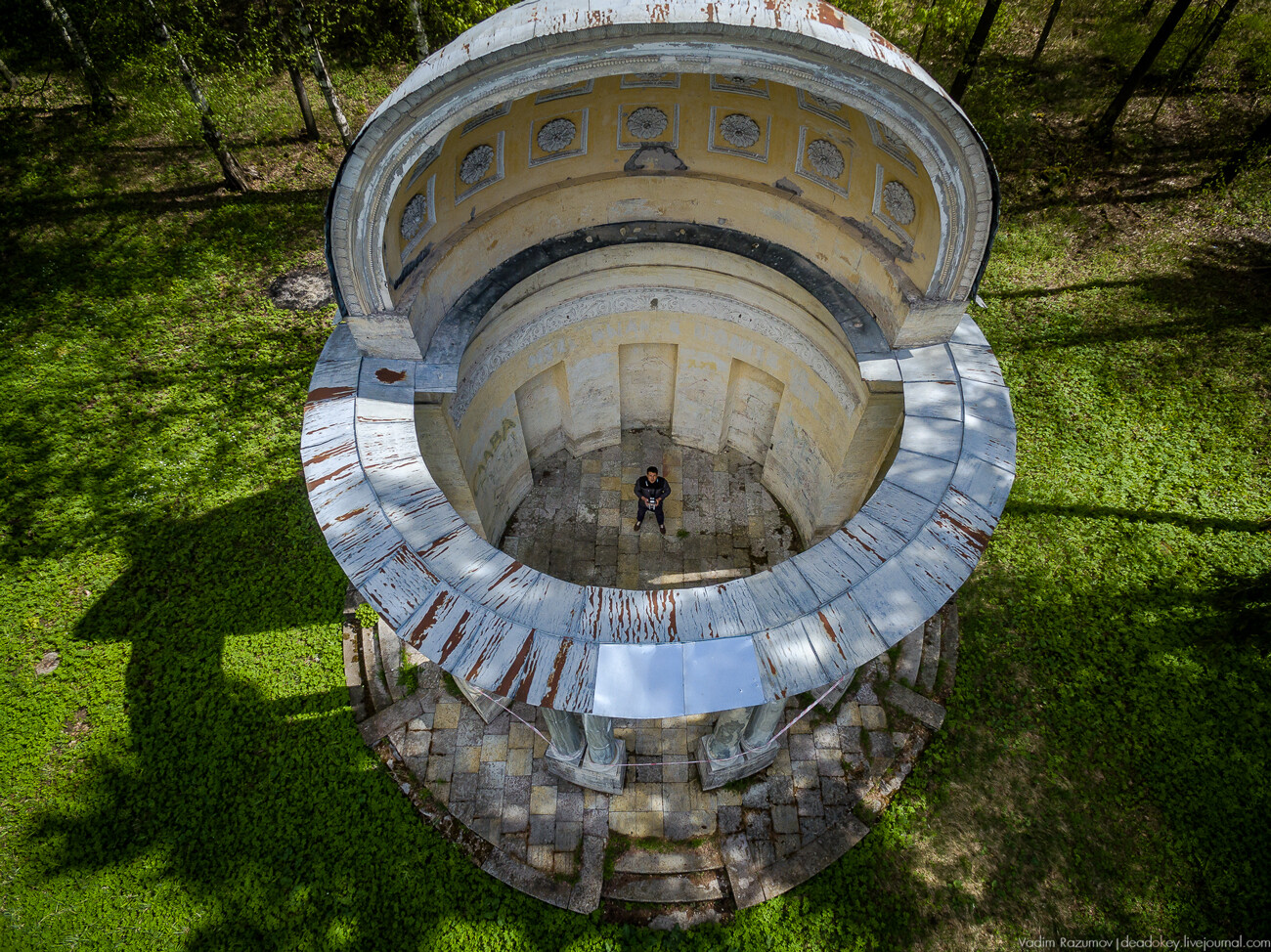
Inside the Eagle Pavilion in Gatchina.
Vadim Razumov/WikipediaThe English Garden at Gatchina includes several lakes with numerous islands, leafy avenues and mazes. All of them are intricately interconnected and complemented by various structures. For example, there is a grotto known as "Echo" in which every sound repeatedly reverberates against the walls. The Eagle Pavilion is a rotunda on one of the islands with a marble eagle and the monogram of Emperor Paul I.

But the open octagonal water well that’s built in the form of a pool in the middle of a wooded glade seems to be the most mysterious feature.

Along the embankment of the Fontanka River, on the grounds of the Gavrila Derzhavin estate, you can walk around the romantic Polish Garden that was created at the end of the 18th century. It takes its name from the nearby Catholic cathedral, which was the church of the Polish community at the time.
The estate's Polish Garden combines traditional flowerbeds and ornamental shrubs with kitchen garden crops to give a rustic flavor to the estate grounds. In addition, there’s also an open-air "Green Theater" where concerts are held in the summer.
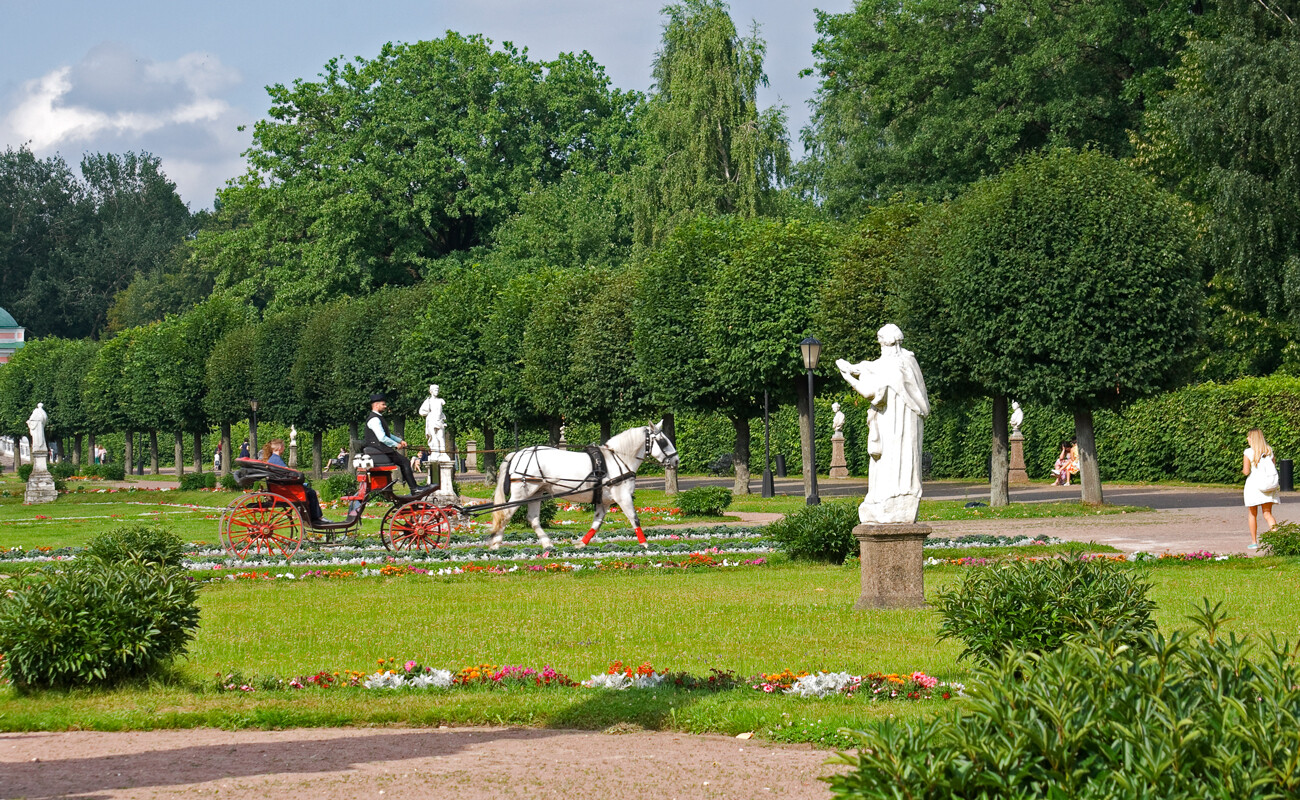
In contrast with English gardens, French parks have a regular layout. The most striking example of a park in this style is Peterhof, just south of St. Petersburg, and which was inspired by Versailles. The only French style park in Moscow is found on the grounds of the Kuskovo Estate that dates from the mid-18th century.
Here, the original layout has survived along with its elegant, symmetrically arranged marble sculptures, obelisks and pavilions, as well as a water supply system made up of ponds and canals.
The eastern part of the estate has an English garden that contrasts with the French park.
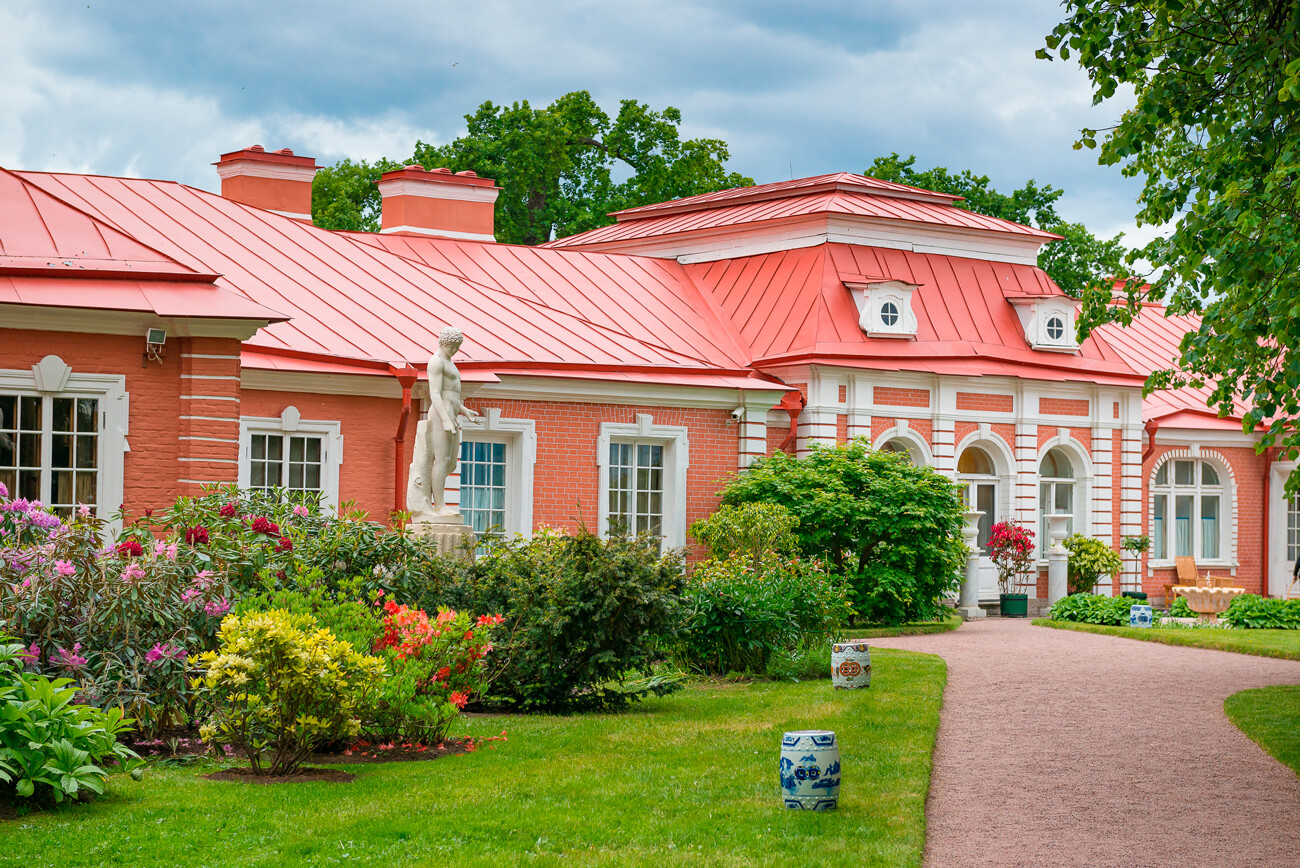
The second half of the 19th century was a period marked by enthusiasm for Eastern culture, not just in Russia but throughout the world. A small Chinese garden appeared in Peterhof in 1866, next to the sea terrace of the Monplaisir Palace on the shores of the Gulf of Finland. In Chinese culture, a garden is more than just a garden - it is a visual aid for interacting with nature. The large number of artificially created reliefs, hillocks, rocks, ponds and terraces provides everything necessary for a creative design.
In the middle of Peterhof's Chinese Garden is a grotto with a fountain and cascade - known as the Rakovina (Seashell) - with streams spanned by humpbacked miniature bridges. Not much is known about this spot since the garden was neglected for almost half a century and only restored in the 1950s.
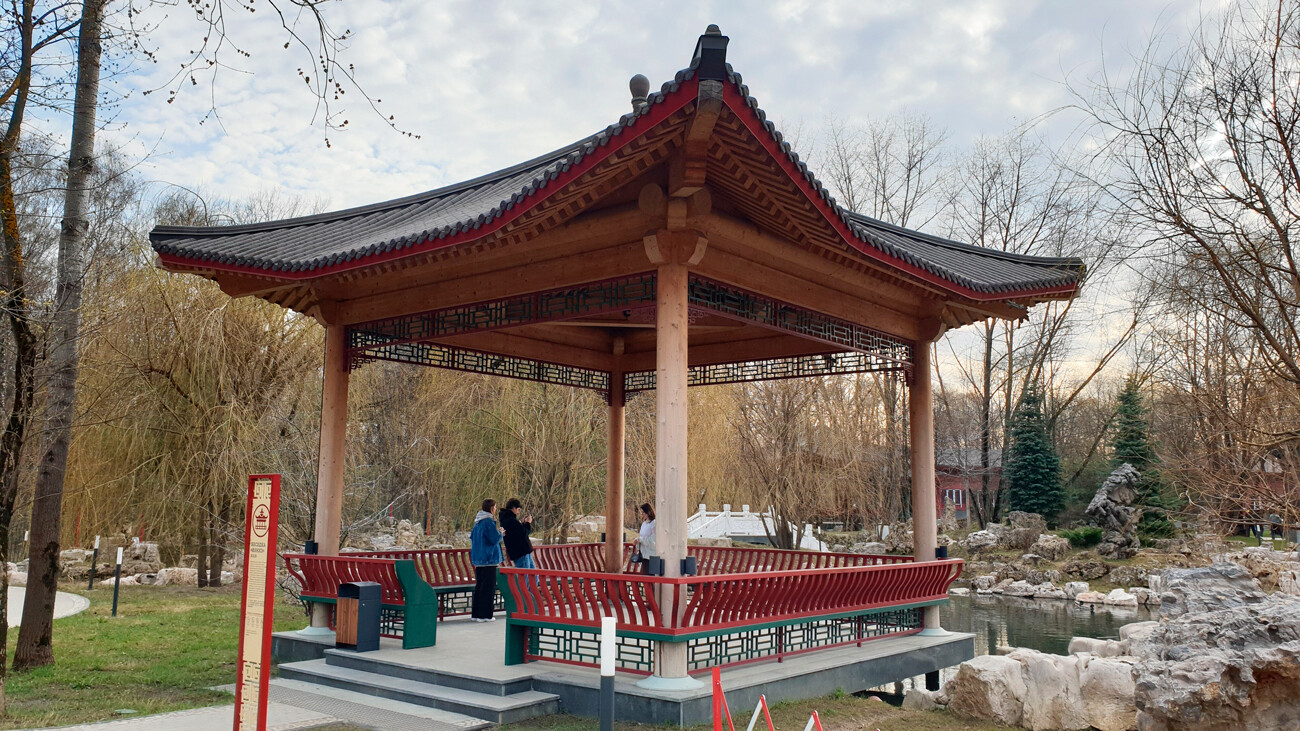
One of the largest Chinese parks outside China is to be found not far from the Botanichesky Sad (Botanical Garden) Metro station in Moscow. The Huamin landscape garden opened in early May near the business center by the same name. The park's architectural layout incorporates three zones: traditional gazebos with a water feature in the center, a strolling area with wooden paths through a tree grove and a facilities area.
At the entrance, visitors pass under an arch with mystical beings from Chinese legends and Chinese lanterns. Not far from the main entrance is a monument to the Chinese philosopher Confucius. A number of cozy gazebos and pavilions can be found here, where tea ceremonies and other events are held.
All the features bear poetic Chinese names: the Ling Long Pond - the pond of refinement; the Ziyun Arch - the purple cloud arch; the Ba Xian Bridge - the bridge of the Eight Immortals, and others.
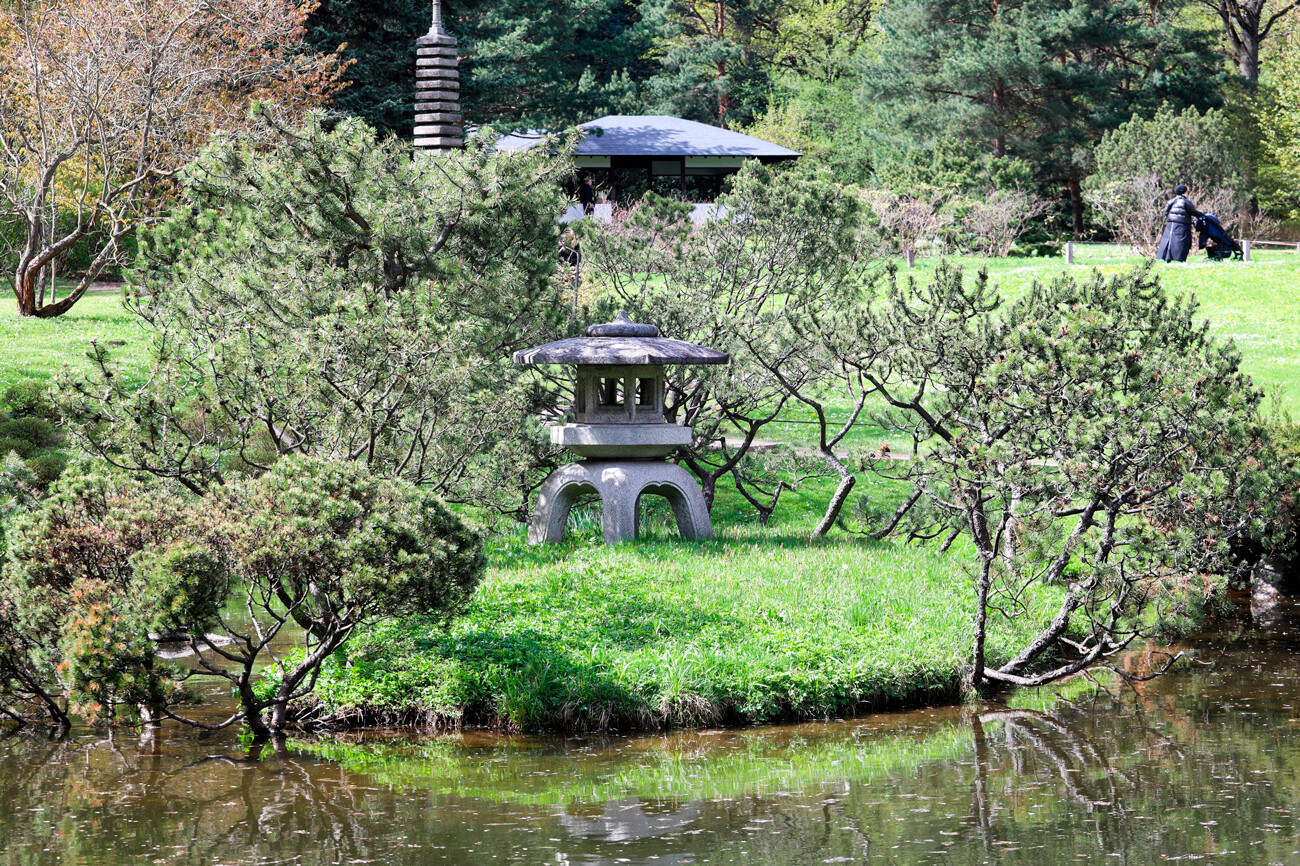
The Botanical Garden of the Russian Academy of Sciences is home to a garden created in the 1980s according to a design by the Japanese landscape architect Ken Nakajima. Japanese gardens are an entire philosophical construct – a universe in miniature. The composition of the Japanese park in Moscow is arranged in such a way as to display all the seasons. Around 70 types of plants grow here, some having been brought from Japan. They include the sakura (flowering cherry), Japanese rhododendron and mono maple.
The St. Petersburg Botanical Garden also has its Japanese Garden. It appeared in 2010 as a result of a joint project by Russian and Japanese specialists. It has a tea pavilion, a rock garden with a miniature Mount Fuji, and a pond inhabited by a kappa water sprite. The garden can only be visited as part of an organized tour.
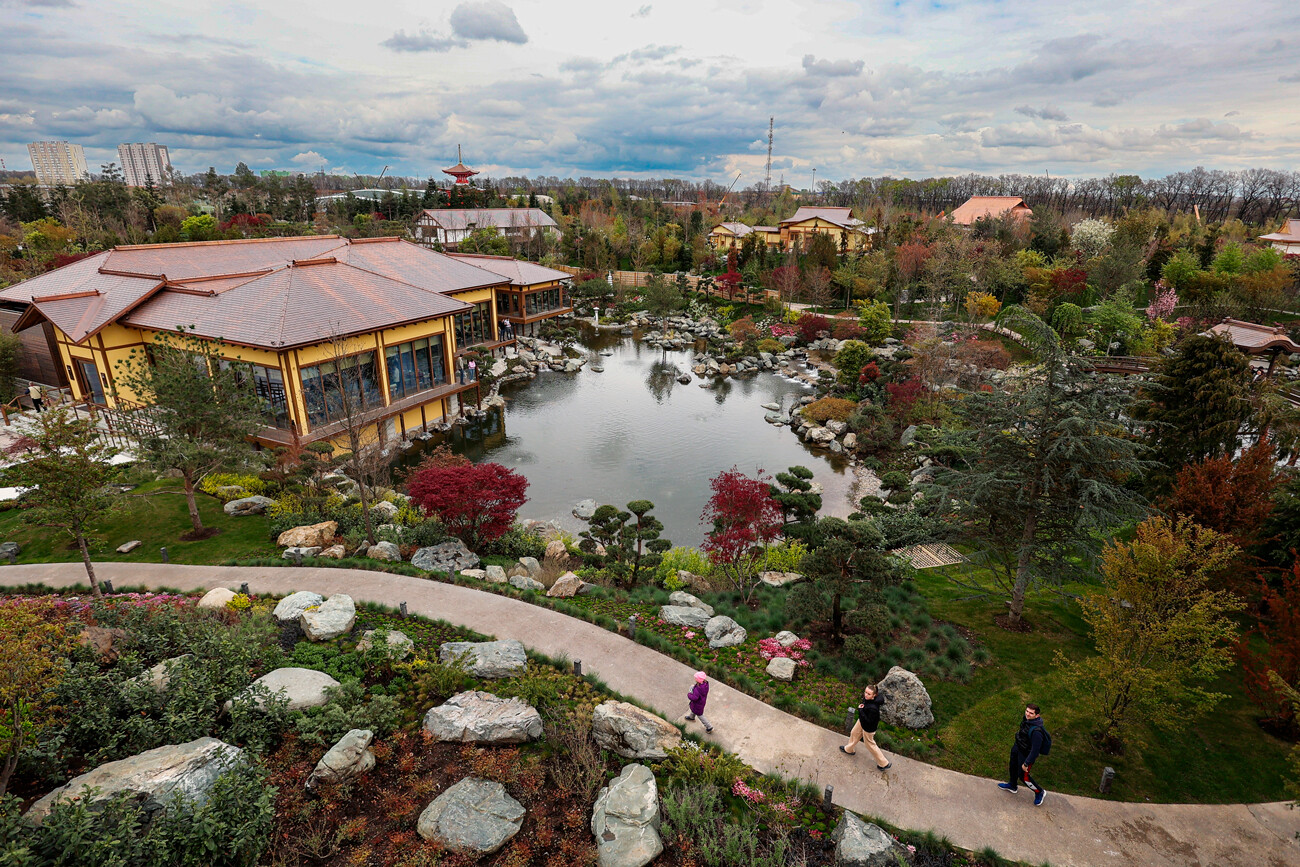
In spring 2023, the residents of Krasnodar acquired a new popular venue for walks - the Japanese Garden. Located in the Krasnodar Park, it’s now the most beautiful park in town. Covering an area of 7.5 hectares, it contains 12,000 trees and shrubs, while 3.5 km of paths run throughout the garden.
Visitors enter through a splendid karamon gate with decorative carvings.
One of the most picturesque corners is a rock garden with plants and various architectural forms. Wavy patterns symbolize flowing water, and the rocks represent mountains.
Nearby is a so-called "dry pond", a space where stones are laid in the shape of a pond, but without water. Naturally, the garden also has traditional pavilions.

The city of Pskov in western Russia is twinned with the Finnish city of Kuopio, in honor of which a park was laid out in 1991 - to mark 25 years of friendly relations. The Finnish Park is right in the center of Pskov on the banks of the river, not far from the Pskov Kremlin. The people of Kuopio came here to plant willows, put up gazebos and build children's playgrounds.
The ruins of an old 16th century watermill and a 17th century tannery building, as well as the layout of the defensive fortifications, can still be found here.
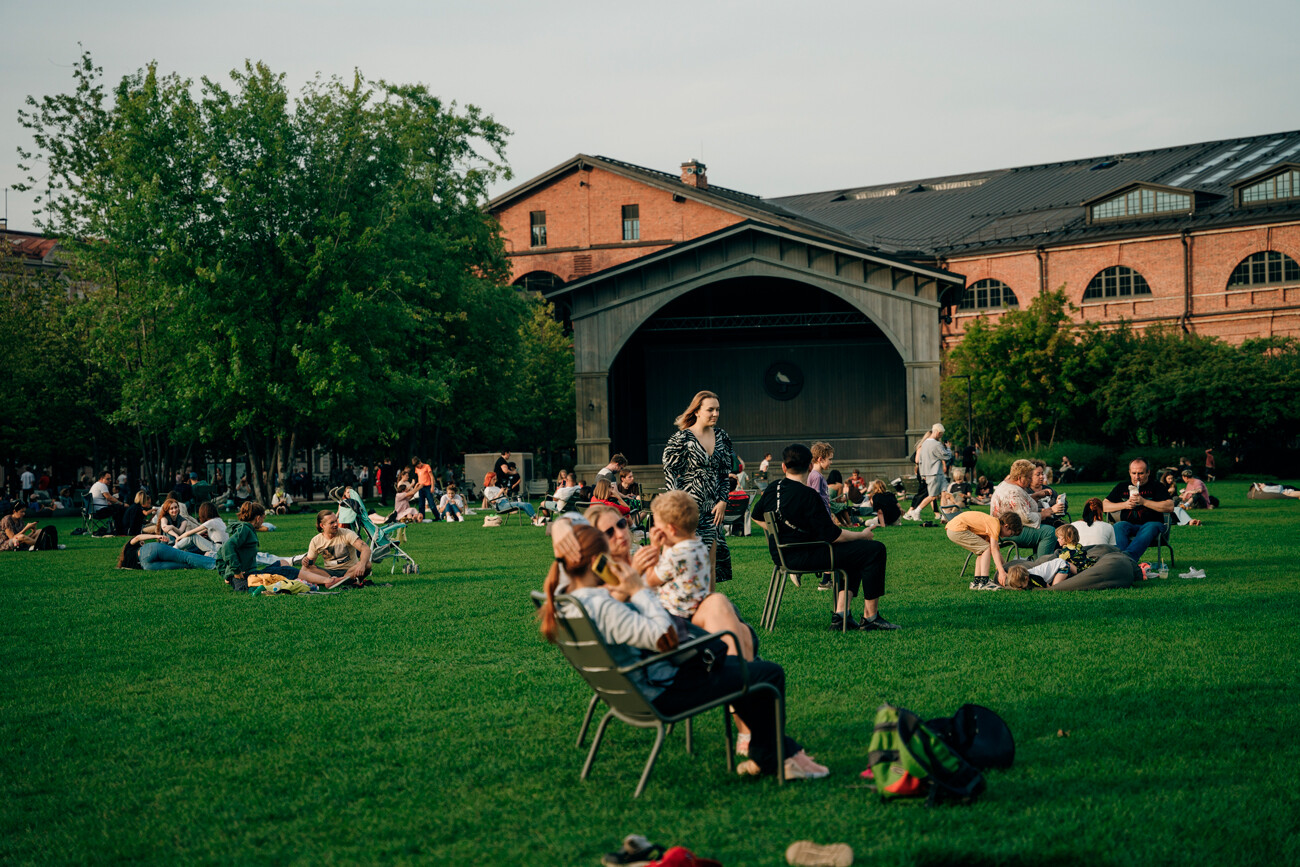
This man-made island in the center of St. Petersburg is now one of the city's most fashionable spots. New Holland is as old as the northern capital itself. The "Holland" part of the name recalls the fact that Tsar Peter I built the Northern Fleet on the banks of the Neva River and invited Dutch shipbuilders to the capital for this purpose. Warehouses for storing ship's timber were located on the island. Today, it is a park and public space with prominent examples of industrial architecture.
Dear readers,
Our website and social media accounts are under threat of being restricted or banned, due to the current circumstances. So, to keep up with our latest content, simply do the following:
If using any of Russia Beyond's content, partly or in full, always provide an active hyperlink to the original material.
Subscribe
to our newsletter!
Get the week's best stories straight to your inbox